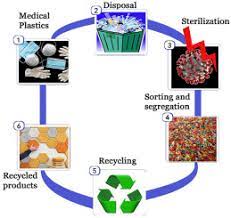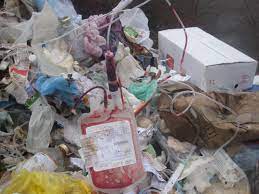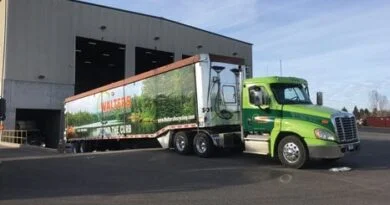Biomedical Waste Recycling and Reuse Process
Recycling involves the collection of used and discarded materials which are processed and turn into making new products. It reduces the amount of waste that is thrown into the community dustbins thereby making the environment cleaner and the air fresher to breathe.
From this definition recycling occurs in three phases: first the waste is sorted and recyclables collected, the recyclables are used to create raw materials. These raw materials are then used in the production of new products.
Serious attention has been shown by government and non-government agencies in the country on the need to recycle wastes having all recognized the importance of recycling wastes.
However, the methodology for safe recycling of waste has not been standardized. Currently, less than 7 %-15% of the waste is recycled in the country. If recycling is done in a proper manner, it will solve the problems of waste or garbage.
Steps Involved in Waste Recycling
The steps involved in the process prior to recycling include:
- Collection of waste from doorsteps, commercial places etc.
- Collection of waste from community dumps
- Collection/picking up of waste from final disposal sites.
The sorting of recyclables may be done at the source (i.e. within the household or office) for selective collection by the municipality or to be dropped off by the waste producer at a recycling centres.

The pre-sorting at the source requires public participation which may not be forthcoming if there are no benefits to be derived. Also a system of selective collection by the government can be costly. It would require more frequent circulation of trucks within a neighborhood or the importation of more vehicles to facilitate the collection.
Read Also: Other Methods/Technologies for Biomedical Waste Treatment
Another option is to mix the recyclables with the general waste stream for collection and then sorting and recovery of the recyclable materials can be performed by the municipality at a suitable site. The sorting by the municipality has the advantage of eliminating the dependence on the public and ensuring that the recycling does occur.
The disadvantage however, is that the value of the recyclable materials is reduced since being mixed in and compacted with other garbage can have adverse effects on the quality of the recyclable material.
Strategies for Carrying out Waste Recycling
Before developing a strategy for implementing 3R practices, municipal authorities must answer the following questions:
- Who are the recyclers?
- What are the advantages of recycling biomedical waste?
- What is being recycled?
- What is not being recycled and why?
- What are the main challenges?
- What steps are necessary to improve the recycling and resource recovery of materials?
Ideally, the 3R (reduce, reuse and recycle) concept will be applied as early as possible in the waste generation and management chain so that managers of waste can:
- Maintain the high material quality and value of recyclable waste materials
- Reduce the loss of valuable natural resources and virgin raw materials
- Limit pollution of land
- Reduce long-distance transport of waste
- Reduce landfill space requirements and environmental pollution
- Minimize the costs of both production of goods and management of waste.
Recycling Materials
Almost every material can be recycled; however, the value of the recycled material can vary significantly depending on the demand and uses for it. Indeed the value of a material is the driving factor for private recycling initiatives or in the case of many developing countries the informal sector.
If and how a material is recycled depends not only on local policies but also on the availability of a buyer, processing facilities, and a transport chain.
Read Also: Classification, Processes and Importance of Biomedical Waste Minimization
Most of the garbage generated in the household can be recycled and reused. Organic kitchen waste such as leftover foodstuff, vegetable peels, and spoilt or dried fruits and vegetables can be recycled by putting them in the compost pits that have been dug in the garden.
Old newspapers, magazines and bottles can be sold to the waste vendor the man who buys these items from homes. In your own homes you can contribute to waste reduction and the recycling and reuse of certain items. Table below shows some household wastes that can be recycled or reused.



